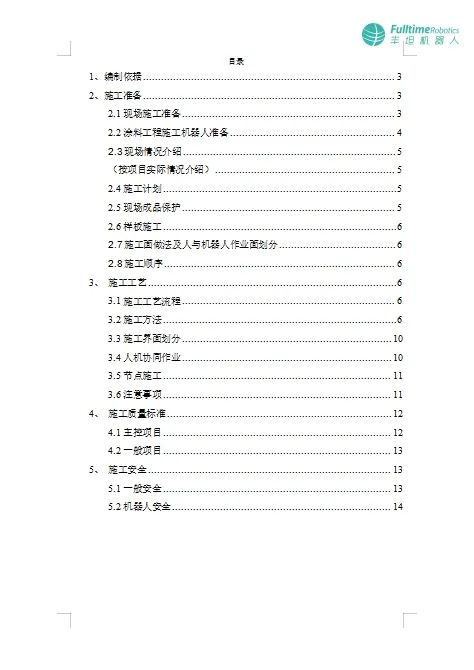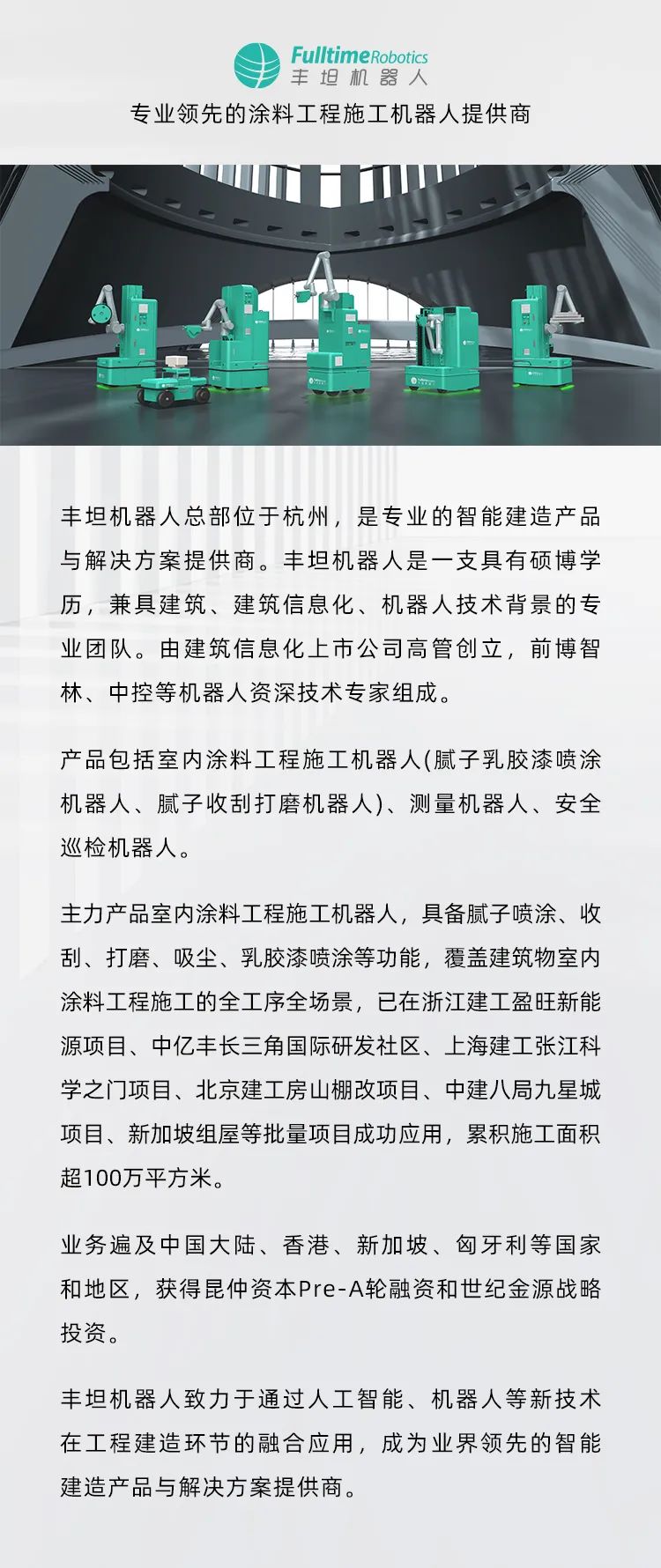



ZIKE LI
Personal Introduction
Founder and CEO of Hangzhou Fontan Robot Co., Ltd. Senior Engineer, Member of Jiu San Society, Master of Project Management from the University of Quebec in Canada, Member of the Intelligent Construction Expert Committee of Zhejiang Provincial Department of Housing and Urban-Rural Development, Expert in the Expert Database of Zhejiang Provincial Department of Science and Technology, Member of the Construction Robot Professional Committee of China Association for Engineering Construction Standardization, Member of the Civil Engineering Graphics Branch of China Graphics Society, Vice President of the Intelligent Construction Branch of Hangzhou Construction Industry Association. Editorial Board Member of the 6th Edition of *Construction Manual - Digital Construction*, Associate Editor of *Technology and Application of Construction Robots and Intelligent Equipment*, and has presided over and participated in the construction application of dozens of key domestic and foreign construction robot projects.
On the busy construction site, in addition to the busy figures on the manual scaffolding, several construction robots are operating smoothly. This is not an accidental technical demonstration, but a systemic change taking place in the construction industry - as construction robots move from laboratories to construction sites, a technology-driven industry transformation is accelerating. Based on the verification of robot construction practices covering millions of square meters and the extraction of engineering logic models, Li Zike, founder and CEO of Fontan Robot, provides an in-depth interpretation of the key codes for the successful application of construction robots.
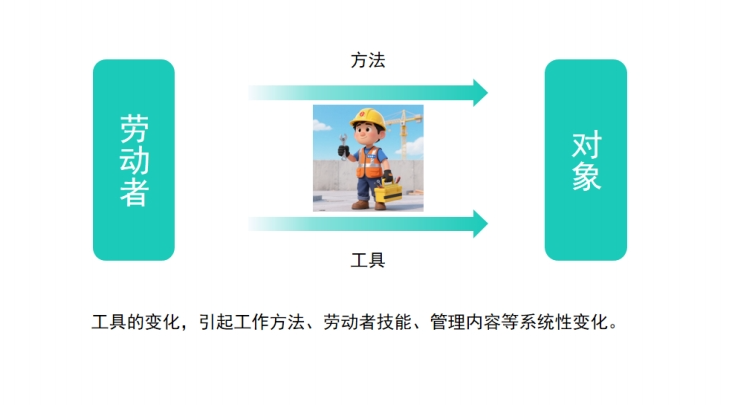
Laborers, labor objects, tools, and methods constitute the basic framework of the logical model. When tools are upgraded to robots, laborers shift from direct operation to controlling robots, which puts new requirements on laborers' skills and methods, thereby triggering systemic changes in the production process. Li Zike believes that the five core elements supporting such systemic changes are scenarios, tools, organization, methods, and capabilities. These five elements interact with and promote each other, collectively influencing the expected outcomes.
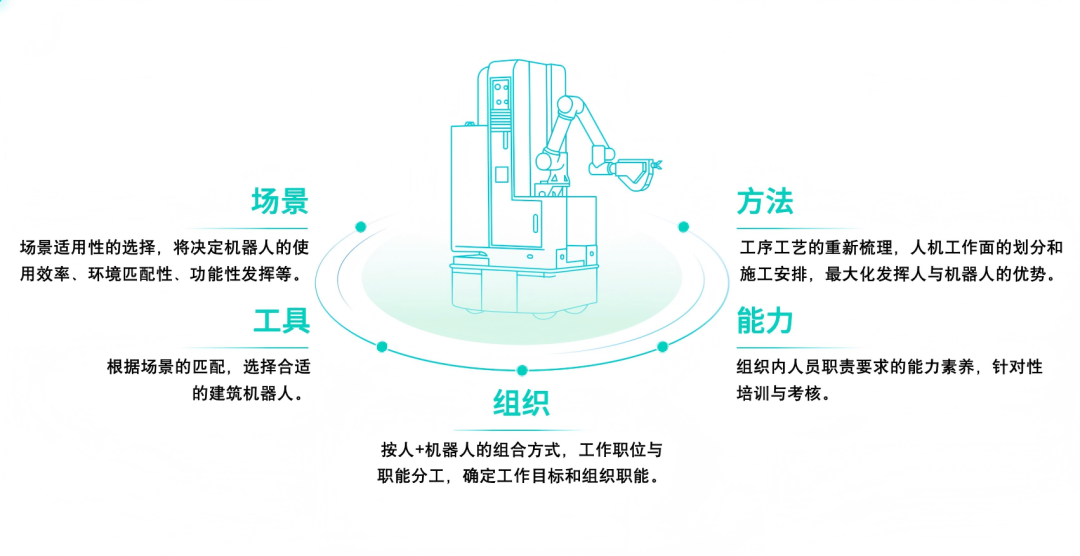
1
Scenario: Only by finding the right stage can you dance well.
Construction robots need to be matched with a suitable "stage" to exert their capabilities. In the complex scenarios of building construction, not all processes are suitable for robot intervention, nor are all scenarios suitable for construction by the same type of robot. Residential buildings, office buildings, industrial parks, commercial complexes... Different types of buildings have their own characteristics. Even in the same building, there are great differences between the basement and the standard floors. Construction scenarios with regular working environments, high task repetition, and high standardization are often the best battlefields for robots. Especially in scenarios with high floor heights where manual operations are difficult, the advantages of robots in efficiency and safety will be more prominent. Li Zike said, "Accurately identifying the characteristics of the scenario and clarifying the division of labor between robots and humans is the first step to successful application."
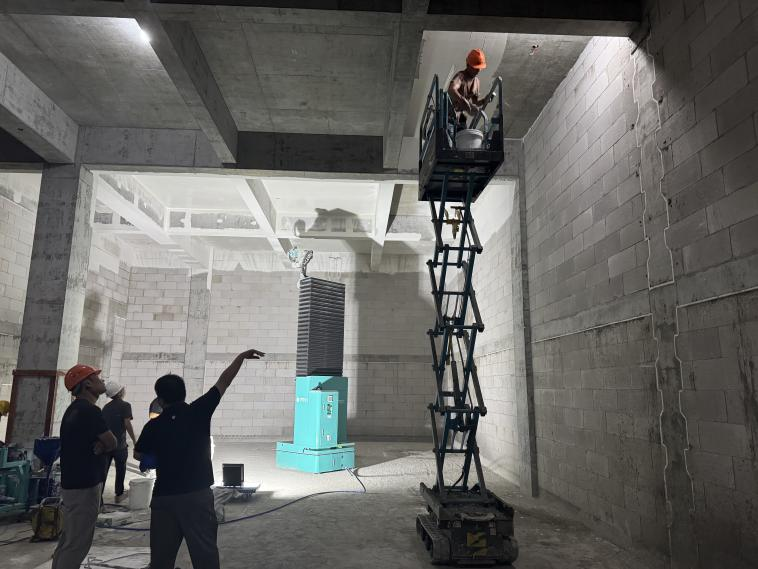
2
Tools: A good horse still needs a good saddle.
After selecting the right scenario, the appropriate robot tool becomes the key to the success of the application. Construction robots are not universal equipment; they have their applicable boundaries and scopes. In indoor painting operations, Fontan's painting robot P320 Max has delivered impressive performance. It can autonomously transfer between multiple rooms and carry out construction conveniently in passages over 1 meter wide, greatly improving walking efficiency and painting operation efficiency, which far exceeds the average level of manual operations.
The "secret weapon" of this robot lies in its scenario-adaptive design: it has an operating height of 3.2 meters, specially designed for indoor coating construction scenarios with a height of less than 3.2 meters; it supports one-click import of CAD drawings and BIM models, enabling automatic planning of the optimal operating path; equipped with a 6-axis high-precision robotic arm and intelligent algorithms, a four-wheel all-directional steering wheel chassis that can flexibly turn, and combined with the global perception capability of a 360-degree high-precision laser radar, it has built a precise environmental perception and intelligent decision-making system.
Therefore, even in non-standard environments with irregular spatial layouts, the robot can achieve autonomous space transition with centimeter-level error and efficient obstacle avoidance, increasing the latex paint spraying efficiency to over 250 square meters per hour, which significantly shortens the construction period and reduces construction costs.
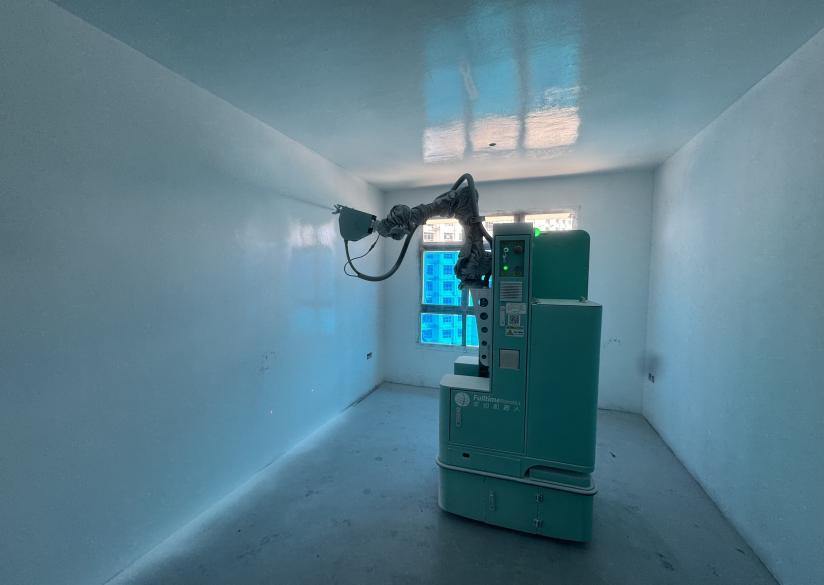
Depending on the applicable scenarios, there are different models of construction robots. For example, the putty and latex paint spraying robots independently developed by Fontan Robot include a 6-meter model suitable for scenarios such as factories, venues, and transportation hubs, as well as a 3.2-meter model specially designed for residential standard rooms and narrow passages. The different model parameters, operating radii, and functional designs are precisely intended to accurately match the spatial constraints and operational needs of different scenarios, allowing the robots to exert their maximum efficiency on their respective specialized "stages".
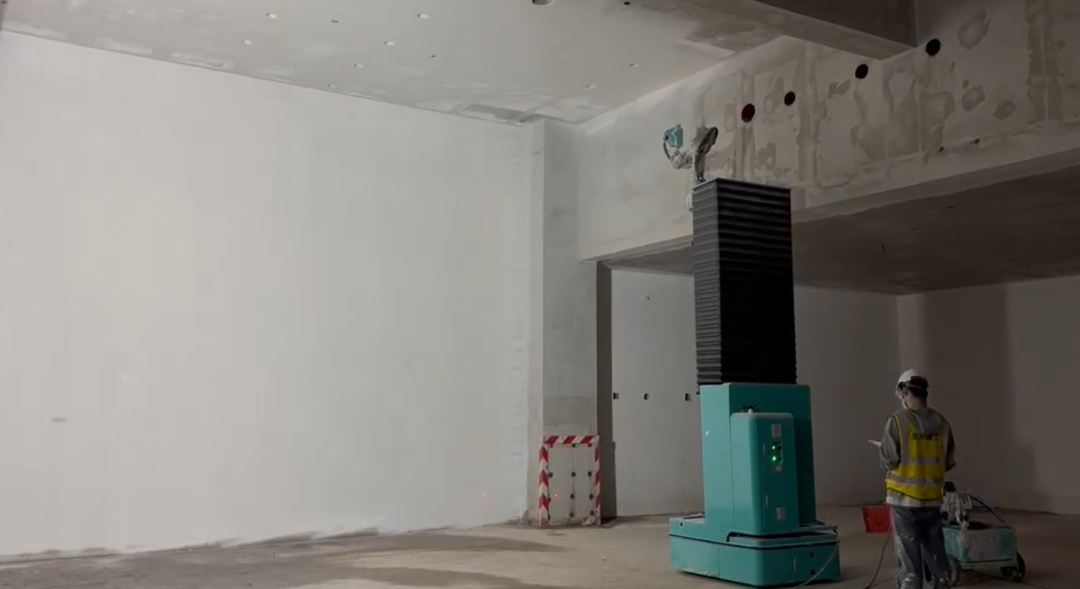
The importance of tool adaptation is even more prominent in failure cases. Failing to consider the complexity and non-standard nature of the construction environment will lead to a great deal of cost waste and manual rework. This reminds us that talking about tool performance without considering the scenario is just like engaging in empty talk on paper.
3
Organization: New formations are needed for construction collaboration
Traditional construction organization adopts a multi-level subcontracting model: "specialized subcontracting - labor subcontracting - work team - worker". This approach consolidates the responsible entities through clear hierarchical levels and has formed its own advantages in long-term practice. However, as the industry transforms towards construction industrialization, large-scale production, mechanized construction and assembly-line operations have become core features. When robots are deeply integrated into the construction team, the traditional organizational structure must be upgraded accordingly.
A new type of "human-robot collaborative team" is operating efficiently: multiple robots are responsible for fully automatic construction, 1 robot operator takes charge of overall project management, equipment debugging and monitoring, 1 repair worker handles corner details, and 1 worker ensures material supply. The daily workload of such a 3-person team, in terms of putty construction, reaches 500-600 square meters per person per day, which is equivalent to 4-5 times the workload of the traditional model.
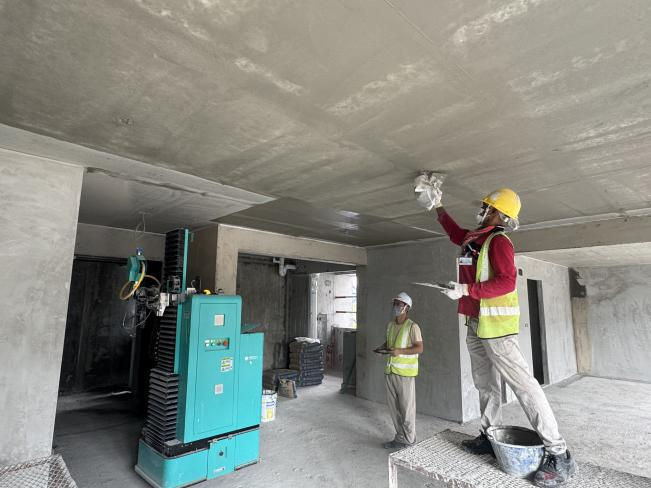
This organizational reform has broken the traditional model of "subcontracting instead of management". Li Zike explained that robots will not automatically generate productivity. To successfully apply construction robots in projects, it is necessary to redefine the list of responsibilities according to the actual situation of the project and formulate standards for key nodes of human-robot collaboration.
In traditional construction, workers operate in a sequential flow according to procedures; while in the human-robot collaboration mode, it is necessary to establish a flexible division of labor system featuring "robots as the mainstay and humans as the supplement". This not only gives play to the advantages of robots in efficiency and quality, but also retains the flexible handling ability of humans, forming a kind of technological labor through such organizational methods.
Many construction projects have even set up a special post of "robot navigator", who is responsible for overall equipment scheduling, personnel deployment and process connection. This innovation has also significantly improved the utilization rate of robots.
4
Method: Old processes need to put on "new clothes"
The integration of robots is forcing a systematic innovation in construction methods.
Construction teams need to conduct targeted optimizations on the original processes and techniques based on the operational characteristics and collaborative needs of robots, ultimately forming a standardized method system adapted to human-robot collaboration. For example, in the case of robot construction, the sequence of ceiling installation and paint application needs to be adjusted; in the putty construction process, there are also obvious differences between manual and robot construction methods.
Innovation in processes and techniques requires breaking away from path dependence and attaching great importance to human-robot collaboration. Project production managers, on the basis of fully grasping the operational characteristics of robots, should accurately divide the human-robot collaboration interface: clarify which processes are completed by robots and which links require manual assistance and cooperation. Through comprehensive technical disclosure, all parties can clearly grasp the division standards, avoiding work stoppages caused by unclear responsibilities in the later stage from the source.
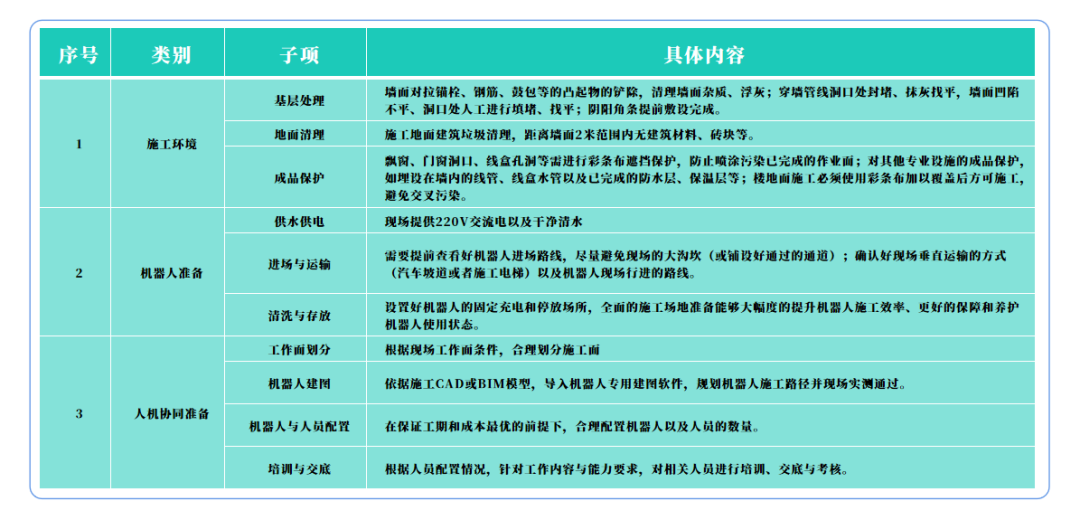
5
Capability: Robot navigators have new "skills"
In the era of robots, the skill structure of construction workers is undergoing profound changes. The *Vocational Skill Standards for Construction Robot Navigators* jointly released by the Jiangsu Provincial Construction Industry Association and the Jiangsu Provincial Construction Education Association has been officially implemented since August this year. In November last year, the *First Batch of Job Directory for Intelligent Construction Professional and Technical Talents in Changsha* was officially released, which includes positions for intelligent equipment and construction robot navigators.
"A construction robot navigator" generally refers to a professional and technical personnel who has received systematic training, obtained vocational skill certification, is proficient in operating construction robots, and possesses the ability to perform general fault diagnosis, maintenance, and construction management of construction robots.
In recent years, this emerging role has come to the fore in more and more construction projects. On busy construction sites, they hold remote-control tablets and skillfully operate robots to complete high-precision operations, becoming the core link in human-robot collaborative construction. In the not-too-distant future, "construction robot navigators" are expected to become an indispensable standard role in various construction projects.
What abilities does an excellent "construction robot navigator" need to possess? Li Zike believes that the upgrading of personnel capabilities covers three dimensions: basic operation ability, which means being proficient in controlling robots to complete standard operations; collaborative cooperation ability, which involves mastering the working skills of human-robot complementarity; and emergency handling ability, which refers to the ability to quickly solve common equipment problems. According to the project practice data of Fontan Robot, workers who have received systematic training can improve the comprehensive efficiency of robots by 50%.
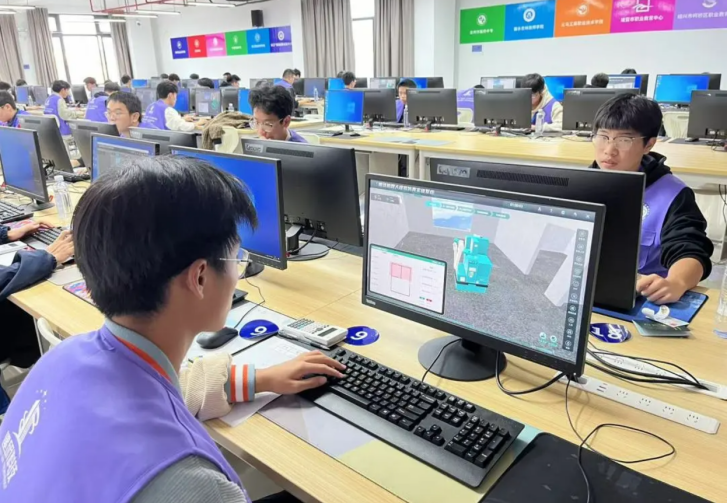
Collaborative efforts: The five elements work together to create value
Scenarios, tools, organization, methods, and capabilities are not isolated elements but an organic whole that supports each other.
In project practice, the synergistic effect of these five elements must be fully exerted. For different construction scenarios, projects should accurately select suitable robots, simultaneously establish professional robot operation teams, innovate construction techniques, and improve workers' operational capabilities through special training. This combination of measures ensures the successful application of construction robots.
In the million-square-meter projects served by Fontan Robot, the construction efficiency has increased by more than 20% compared with the traditional model, and the qualified rate of quality has significantly improved. These successes confirm Li Zike's view: the five elements are closely linked, jointly forming a complete transformation chain for the application value of construction robots.
As technology continues to mature, construction robots are moving from application in individual processes to comprehensive penetration. When accurate identification of scenarios, in-depth adaptation of tools, flexible organizational collaboration, systematic innovation of methods, and continuous upgrading of capabilities join forces, the construction industry will truly enter the intelligent era.
The construction site of the future will no longer be a "sweat-driven" workplace but will become a "smart" construction platform. These five core elements are the key codes to the future. For construction enterprises, mastering this set of codes is the only way to seize opportunities in the industry transformation and achieve high-quality development.
We have always respected the sweat and persistence of traditional construction workers, whose efforts are the cornerstone of the industry's development. However, in today's era where the wave of science and technology is profoundly reshaping industries, we need to think rationally about how the construction industry should actively embrace changes: technological progress never stops because of avoidance. Instead of responding passively, it is better to actively explore how to make technology truly serve people.
By optimizing technology application and improving product adaptation, making construction robots reliable partners that reduce labor intensity, ensure construction safety, and protect occupational health, so that every bit of hard work can be more valuable under the empowerment of science and technology, this is Fontan's expectation and also its mission.
To help more construction projects avoid detours and double their efficiency, We have condensed the experience from over one million square meters of robot construction practice into this *Coating Robot Construction Plan*, which can be called the "Pitfall-Avoidance Guide + Efficiency Code" for robotic painting operations. Now, forward this article to your WeChat Moments and send the screenshot to the official account's backend to unlock the detailed content.

